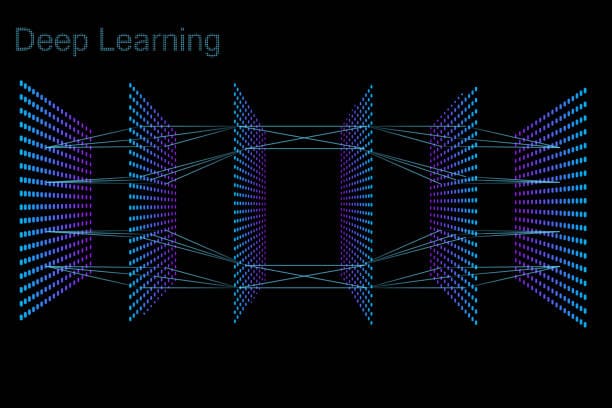Artificial Intelligence (AI) is no longer a distant dream. It’s in our smartphones, guiding our cars, recommending our next favorite movie, diagnosing diseases, and even creating art. Behind the magic of AI lies something deceptively simple yet infinitely complex: code. Programming languages are the unsung heroes of AI, forming the bridge between human ambition and machine intelligence.
But not all programming languages are created equal. Some are better suited for neural networks, some shine in statistical analysis, and others excel in heavy mathematical computations. As AI continues to evolve, mastering the right programming languages has become not just an advantage but a necessity for developers aiming to pioneer the future.
In this exploration, we’ll dive deep into six essential programming languages that dominate the world of AI development. We’ll unravel their histories, strengths, peculiarities, and why they hold the keys to unlocking the limitless possibilities of artificial intelligence.
1. Python: The King of AI Programming
Python has become virtually synonymous with AI development—and for good reason. With its clear syntax, vast libraries, and enormous community support, Python sits on the AI throne, ruling with elegance and accessibility.
Simplicity and Readability
Python’s most celebrated trait is its simplicity. Its readable, clean syntax allows developers to focus on solving AI problems rather than wrestling with complex programming rules. AI models, often intricate by nature, benefit from a language that doesn’t add unnecessary complexity.
Imagine building a neural network layer by layer without worrying about clunky syntax or memory management—Python makes that vision a reality.
A Universe of Libraries
Python’s real superpower lies in its libraries and frameworks tailored for AI:
- TensorFlow: Developed by Google Brain, TensorFlow is a powerhouse for building and training deep learning models.
- PyTorch: Facebook’s answer to TensorFlow, known for its flexibility and dynamic computation graphs.
- Scikit-learn: A dream library for traditional machine learning algorithms, from clustering to regression.
- Keras: High-level neural network API that runs on top of TensorFlow, making deep learning accessible even to beginners.
- Pandas and NumPy: Essential for data manipulation and numerical computing.
Python offers tools for every stage of AI development—from data preprocessing to deploying trained models into production environments.
Community and Resources
With millions of developers contributing to its growth, Python’s AI ecosystem is vibrant. Tutorials, documentation, and forums abound, making problem-solving collaborative and fast.
Whether you’re a seasoned AI expert or a fresh-faced coder, Python opens the doors to a world where machines learn, predict, and evolve.
2. R: The Statistician’s Secret Weapon
When it comes to data-driven AI, especially models steeped in statistics and visualization, R holds a special place. Although traditionally associated with statistical analysis and academic research, R’s capabilities in machine learning and AI are both profound and expanding.
Statistical Supremacy
Artificial Intelligence, at its core, is heavily based on statistics. Predictive modeling, hypothesis testing, probabilistic reasoning—all these tasks align perfectly with R’s strengths.
R was designed by statisticians for statisticians. It excels in statistical computing, making it ideal for building AI models that require complex statistical analysis.
Rich Visualization Tools
Visualization is crucial in AI, especially when tuning models or explaining outcomes to non-technical stakeholders. R provides world-class visualization packages like:
- ggplot2: Stunning, customizable graphs and charts.
- Shiny: Interactive web applications built straight from R.
- Plotly: Interactive plots that bring data to life.
The ability to visualize high-dimensional data and model outputs clearly gives AI practitioners working with R a tremendous advantage.
AI and Machine Learning Packages
R isn’t just for traditional statistics. It has robust libraries specifically geared toward AI and machine learning, including:
- Caret: For simplifying the training of machine learning models.
- randomForest: For building ensemble learning models.
- xgboost: For gradient boosting, a key technique in many machine learning competitions.
In domains like bioinformatics, financial modeling, and social science research, R’s unique combination of statistical rigor and machine learning power makes it a formidable choice for AI development.
3. Java: The Workhorse Behind Enterprise AI
While it may not have the trendy reputation of Python or R, Java is a titan in the world of enterprise AI applications. Known for its speed, scalability, and stability, Java is often the language of choice when AI solutions must move from the lab into the real world.
Portability and Scalability
Java’s motto, “Write Once, Run Anywhere,” is no idle boast. Java code runs on any device equipped with the Java Virtual Machine (JVM), making it incredibly portable—a massive boon for AI systems intended for diverse environments.
AI applications often need to scale to serve millions of users or process petabytes of data in real time. Java’s robustness and multi-threading capabilities make it ideal for such heavy lifting.
Machine Learning Libraries
Java’s AI and machine learning ecosystem is solid and growing:
- Deeplearning4j: An open-source deep-learning library designed specifically for Java and Scala.
- Weka: A collection of machine learning algorithms for data mining tasks.
- MOA (Massive Online Analysis): For data stream mining.
Moreover, companies building AI-driven web applications, fraud detection systems, or recommendation engines often choose Java because of its excellent integration capabilities and proven performance at scale.
Enterprise AI and Big Data Integration
In an era where AI meets Big Data, Java shines brightly. Its seamless integration with big data tools like Hadoop, Apache Spark, and Kafka ensures that AI systems built in Java can ingest, process, and act on data streams in real time.
In the business world, reliability trumps novelty—and that’s where Java’s mature, battle-tested nature makes it indispensable.
4. C++: The Speed Demon of AI
When raw performance and direct hardware control are critical, C++ comes into its own. Though notoriously challenging to master, C++ offers unparalleled speed and efficiency, making it crucial in certain AI subfields like robotics, computer vision, and real-time AI systems.
Lightning-Fast Execution
In AI domains like autonomous vehicles, robotics, and gaming, milliseconds can make the difference between success and catastrophic failure. C++’s low-level memory management and execution speed allow AI applications to operate with minimal latency.
Deep learning frameworks like TensorFlow and PyTorch often have core components written in C++ to maximize performance, even though they offer higher-level Python APIs for usability.
Real-Time Systems
AI-driven real-time systems—such as drones navigating dynamic environments or medical devices assisting surgeries—demand the responsiveness that only C++ can deliver.
Moreover, many reinforcement learning algorithms, where agents must learn and react on the fly, benefit immensely from C++’s high execution speed.
Libraries and Frameworks
Several important AI libraries leverage C++ for maximum performance:
- TensorRT: NVIDIA’s deep learning inference optimizer and runtime library for high-performance deep learning applications.
- OpenCV: An open-source computer vision library with extensive support for real-time image and video processing.
For developers aiming to squeeze every ounce of performance from hardware—especially GPUs and TPUs—C++ remains a critical tool in the AI arsenal.
5. JavaScript: Bringing AI to the Web
Artificial intelligence isn’t confined to laboratories and servers anymore. Increasingly, AI applications are moving to the web, and JavaScript is the language that powers this frontier.
AI in the Browser
Imagine visiting a website that uses machine learning to instantly recommend products, recognize images you upload, or even offer personalized interactions—all without contacting a backend server. Thanks to JavaScript and advances in WebAssembly and WebGL, AI can now live directly in the user’s browser.
Libraries like:
- TensorFlow.js: Brings TensorFlow’s machine learning power to the browser and Node.js environments.
- Brain.js: A JavaScript library for neural networks, easy to use and effective for simple tasks.
- Synaptic: An architecture-free neural network library.
These tools empower developers to build and deploy AI models that users can experience instantly, with minimal latency.
Cross-Platform Applications
Using JavaScript frameworks like React Native, developers can create cross-platform mobile apps infused with AI capabilities. This democratizes access to AI, allowing users with only a smartphone and an internet connection to benefit from machine learning models.
JavaScript’s ubiquity, flexibility, and evolving capabilities make it an essential language for developers who want to bring the magic of AI to the masses.
The Rise of Edge AI
As computing shifts from centralized clouds to the “edge”—closer to the user—JavaScript is poised to play a crucial role. AI at the edge reduces latency, protects privacy, and improves user experiences. JavaScript, by virtue of being everywhere, will be at the heart of this movement.
6. Julia: The New Kid With Big Dreams
Among the newer programming languages, Julia is rapidly gaining attention as a language purpose-built for high-performance numerical and scientific computing—making it a strong contender for AI’s future.
Speed Meets Simplicity
Julia combines the speed of C++ with the readability of Python. Its just-in-time (JIT) compilation allows for execution speeds that are comparable to traditionally compiled languages, yet it maintains high-level syntax that is easy to learn and use.
In AI research, where training complex models can take days or weeks, Julia’s speed is a potential game-changer.
Designed for Mathematics
Julia was designed with linear algebra and numerical analysis in mind—the very foundations of machine learning and AI. Built-in support for vectors, matrices, and higher-order mathematical abstractions make Julia an ideal language for developing sophisticated AI algorithms.
Growing Ecosystem
Julia’s AI ecosystem, while younger than Python’s, is blossoming rapidly:
- Flux.jl: A flexible and intuitive deep learning library for Julia.
- MLJ.jl: A machine learning framework unifying many models under one interface.
- Knet.jl: Another strong library for deep learning research.
Researchers tackling cutting-edge AI problems—especially those demanding extreme computational efficiency—are increasingly exploring Julia as an alternative to more established languages.
The Future Beckons
Though it hasn’t yet achieved the ubiquity of Python, Julia’s rapid growth, technical strengths, and passionate community make it a language to watch. It may very well define the next era of AI innovation.
Conclusion: A Multilingual Future
There is no single “best” programming language for AI. Each language offers unique strengths suited to particular tasks and contexts. Python democratizes AI development with simplicity and libraries. R offers statistical depth. Java delivers enterprise-grade reliability. C++ powers performance-critical systems. JavaScript brings AI to the web. Julia promises a future where speed and ease coexist.
For the modern AI developer, being multilingual is a virtue. Understanding when and how to leverage each language empowers developers to build smarter, faster, and more innovative AI systems.
In the end, languages are tools—and in the hands of visionary programmers, they become instruments for shaping an intelligent future.
The code you write today may not just automate tasks or crunch numbers. It may create machines that think, learn, create—and maybe, someday, dream.






